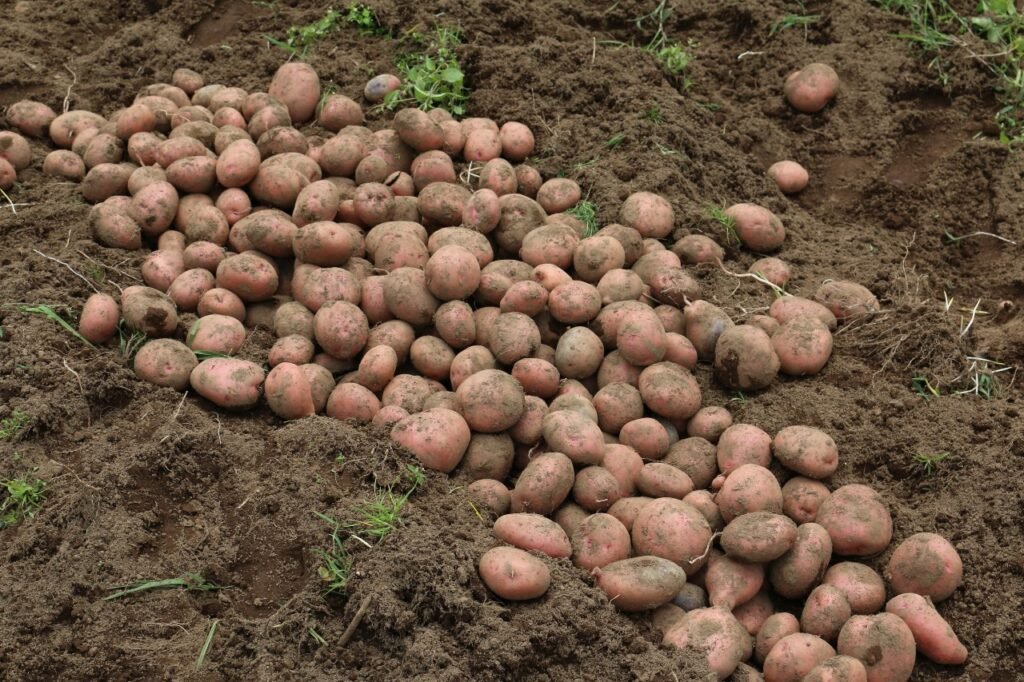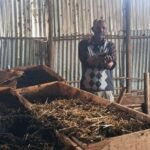By Zablon Oyugi, Novemeber 17, 2025 – In a major breakthrough for smallholder farmers, scientists at the International Potato Center (CIP) have announced the development of a new potato variety, CIP-Asiryq, which shows strong resistance to late blight — the devastating disease that caused the Irish Potato Famine and continues to inflict massive agricultural losses globally.
Late blight (caused by Phytophthora infestans) still costs farmers between USD 3 and 10 billion annually. In some regions of Peru, for instance, the disease can reduce potato yields by 50–100%, even in high-altitude areas once thought safer.
Meanwhile, conventional control methods often force farmers to spray fungicides up to six times a month, a costly strategy that can eat into 10–25% of a farmer’s total crop value — and carries health and environmental risks.
Key Features of CIP-Asiryq
- Disease Resistance: CIP-Asiryq is bred for strong resistance to late blight, reducing the reliance on fungicide applications.
- Faster Cooking Time: It cooks about 25% faster than Peru’s popular Yungay variety, making it more appealing for local consumption.
- Versatility: The variety performs well both as a fresh-table potato and for processing (such as chips), giving farmers more flexibility to meet different market demands.
- Breeding Origins: Scientists used a wild relative of the potato, Solanum cajamarquense, conserved in CIP’s genebank in Lima, to introduce natural resistance traits.
Collaboration & Impact
The development of CIP-Asiryq was made possible through global collaboration: CIP scientists worked with Indigenous Andean communities, the Yanapai Group, and was supported by the Crop Trust under its Biodiversity for Opportunities, Livelihoods and Development (BOLD) project — funded by the Government of Norway.
Dr. Thiago Mendes, lead of the BOLD potato pre-breeding project, noted that farmers in Peru’s Huánuco region value this variety not just for its resistance but also for its dual-use (fresh and processed).
Crop Trust’s Executive Director, Dr. Stefan Schmitz, emphasized that the new variety can help reduce production losses, cut costs, and strengthen food security.
Global Reach — From the Andes to East Africa
While CIP-Asiryq was developed in Peru, its implications are global. Because the parent traits come from genetic material stored in CIP’s genebank, they can be shared with breeding programs around the world under the International Treaty for Plant Genetic Resources for Food and Agriculture.
Importantly, Dr. Mendes, now based in Kenya, is already using CIP-Asiryq in breeding work to develop late blight–resistant potato varieties suited to East African highlands. This could be a game-changer for potato farmers in regions where blight remains a persistent challenge.
Dr. Benjamin Kilian, BOLD Project Coordinator at the Crop Trust, called CIP-Asiryq a “powerful testament to the real-world impact of global collaboration,” underscoring the vital role that crop diversity plays in building climate resilience in food systems.
What This Means for Farmers
- Lower Input Costs: Fewer fungicide sprays mean savings on chemical costs, which often form a significant part of smallholder farmers’ expenses.
- Improved Food Security: A more resilient potato crop helps safeguard yields and incomes, especially for vulnerable communities.
- Market Flexibility: Because CIP-Asiryq works for both table consumption and processing, farmers can tap into different value chains — from local markets to industrial potato processors.
- Environmental and Health Benefits: Reduced fungicide use can lessen chemical exposure for farmers and lower environmental contamination.
The introduction of CIP-Asiryq represents a major scientific and humanitarian advance. By blending traditional potato diversity (from wild species) with modern breeding techniques, CIP and its partners have given smallholder farmers a promising, sustainable weapon in the fight against late blight — a disease that has haunted potato production for centuries.






